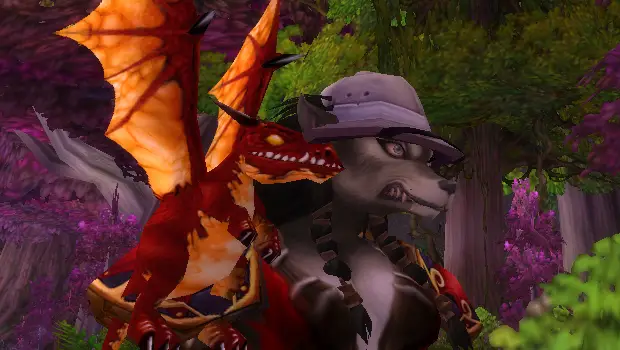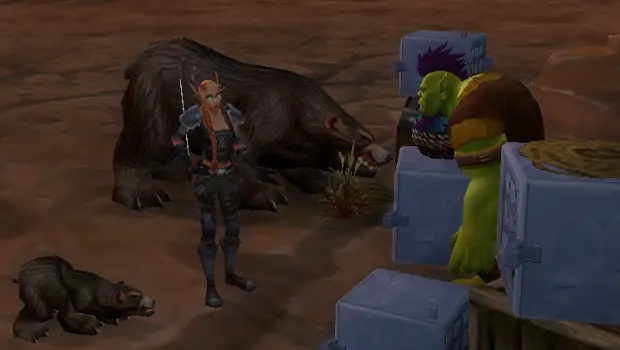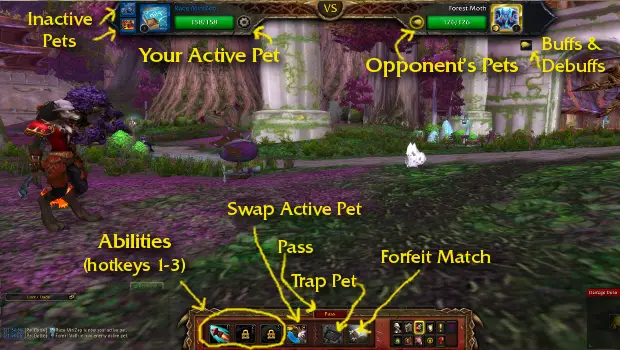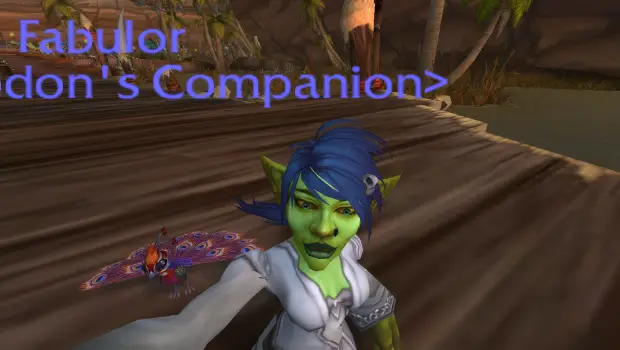Pet battles for beginners

This is the place to be if you’ve never been in a pet battle and would like to start.
First, we’ll answer the question: why pet battle? There are a lot of varied reasons. I started when I still wanted to play the game as a pastime, but I had a baby. If you’ve never had one, perhaps you’re not aware that, “Just 10 more minutes, momma needs to down Ragnaros” is not something an infant is down with. Unlike nearly everything else in the game, pet battling is a solo activity, so it’s great for a varied schedule where you have to suddenly drop everything.
In that vein, I sometimes use pet battles to unwind after a particularly toxic LFR. Though there are outliers, mostly for hotly contested tames, it’s extremely rare that you’re going to get abusive tells from fellow pet battlers. Your character is completely phased out from the world when you’re battling a tamer, which is doubly relaxing if you’re on a PVP server. The reward for honing your skills is a huge collection of adorable little companions that will follow you anywhere.
The cool thing about pet battles is that if you don’t want to do them, you don’t have to. Yes, you’ll miss out on having a cute little Scourged Whelpling for your Death Knight to pal around with, but it is otherwise fully contained just to the pet battling system. If you don’t want to pet battle, then don’t! My feelings will be grievously hurt, but other than that it is totally fine.
If you do want that Scourged Whelpling as your best little corpse-y buddy, your first stop is to either Orgrimmar or Stormwind to speak with Varzok or Audrey Burnhep.

They’ll give you training, a race-specific pet, and start you on a series of quests to teach you the basics of pet battling. Those quests show you how to heal up a pet with a stable master, how to battle, and how to enter your first scripted battle with an NPC tamer. One thing they don’t tell you is that in order to see the little green paw prints floating around in the world above the heads of wild pets you can battle, you need to hit the little magnifying glass icon on your minimap, then make sure the box next to Track Pets is checked.
If you have a character or two at level 98 or higher in a garrison, you may have an Ultimate Battle-Training Stone in hand, ready to raise a pet to cap. If you’re a newbie to the entire game, you might not be ready for that. Either way, your first fight will be quite similar. In your pet journal, drag the pet of your choice from the column on the left into a battling slot on the right. You’ll likely only have one battling slot open for now (you can open extra by leveling lowbie pets). Then, close your journal and right click on any pet wandering the world you’d like to battle! You can tell what level they are by mousing over them before you start. Don’t try to take on a pet with too big a level gap on your very first trip through the rodeo.
Here’s what the battling UI looks like.

Your active pet will directly fight your opponent’s active pet. This is sometimes also called the ‘front row’ as opposed to the ‘back row’. When you open up your other battling slots in your journal, the pet at the top will always enter battle first. You can swap them mid-battle by using the swap active pet button. If one of your pets happens to die mid-battle, they’re automatically sent to the back, and you can choose which of your other living pets enter the fray next. Your pets can only directly attack your opponent’s active pet (barring AOE or other special abilities) so if it would be advantageous for you to attack a pet in your opponent’s back row, you may want to make a swap to ensure your pet is alive when that pet comes into play.
If you do start at level one, your pet (like the one in the screenshot) will only have one ability to work with. You’ll unlock additional abilities as your pet levels up. When your pet hits level 10, you’ll get a new row of abilities, and can begin to swap out that ability for the one displayed directly above it. You can only use three abilities in any given fight. You can’t change them cross-ways, only up and down: there are two choices for each slot. For example, your Anubisath Idol can only pick Sandstorm or Stoneskin in the middle slot. You can’t choose to put Demolish in there instead. Some strategists will list a series of three ones and twos as shorthand to denote the moveset they chose for a particular encounter. The ones mean moves in the top line, twos stand for the ones in the bottom. Using the Anubisath Idol as an example again, a “1, 2, 1” moveset means a pet battler chose Crush, Stoneskin and Deflection to conquer that particular encounter.
If you like the pet you’re fighting, you can try to tame it. You can only tame an opposing pet when it’s at relatively low health. When this is an option, a small clicking sound will play, the box will be in color instead of grayed out, and a bright outline will appear around it. It can frequently be a hassle to tame a pet, because you may miss your trap, and have to go several rounds before you actually tame the pet. You have to finish out a fight with at least one pet alive to be able to keep your new tame, and you can’t kill the pet before you trap it, making this a tricky bit of work at times (and why that awful Turnip is so popular).
Depending on your character’s racial pet, you may learn more quickly than others just how important family interactions are. Each pet and each ability are assigned a family type. This determines the efficacy of attacks, both the ones you make on your opponent and vice versa. If you’re a Gnome or Dwarf, you’re given a Critter as your starter pet. Lots of pets in the wild use Beast attacks, and with a Critter which defends poorly against Beasts, you may be in for a hard time. Conversely, Worgen are given a Flying pet which defends strongly against Beasts, so they get to sail smoothly through the lowbie levels.

Family interactions are the number one thing you need to learn in order to have success pet battling. Strong attacks hit for 50% more, while weak attacks hit for 33% less, drastically altering your pets’ effectiveness. There are a lot of graphics out there to help you remember, or see at a glance which is which, and it’s a bit confusing regardless. I’m going to just restate it in text.
- Aquatic attacks do more damage against Elemental pets. Aquatic attacks do less damage against Magic pets. Aquatic pets take more damage from Flying attacks. Aquatic pets take less damage from Undead attacks.
- Beast attacks do more damage against Critter pets. Beast attacks do less damage against Flying pets. Beast pets take more damage from Mechanical attacks. Beast pets take less damage from Humanoid attacks.
- Critter attacks do more damage against Undead pets. Critter attacks do less damage against Humanoid pets. Critter pets take more damage from Beast attacks. Critter pets take less damage from Elemental attacks.
- Dragonkin attacks do more damage against Magic pets. Dragonkin attacks do less damage against Undead pets. Dragonkin pets take more damage from Humanoid attacks. Dragonkin pets take less damage from Flying attacks.
- Elemental attacks do more damage against Mechanical pets. Elemental attacks do less damage against Critter pets. Elemental pets take more damage from Aquatic attacks. Elemental pets take less damage from Mechanical attacks.
- Flying attacks do more damage against Aquatic pets. Flying attacks do less damage against Dragonkin pets. Flying pets take more damage from Magic attacks. Flying takes less damage from Beast attacks.
- Humanoid attacks do more damage against Dragonkin pets. Humanoid attacks do less damage against Beast pets. Humanoid pets take more damage from Undead attacks. Humanoid pets take less damage from Critter attacks.
- Magic attacks do more damage against Flying pets. Magic attacks do less damage against Mechanical pets. Magic pets take more damage from Dragonkin attacks. Magic pets take less damage from Aquatic attacks.
- Mechanical attacks do more damage against Beast pets. Mechanical attacks do less damage against Elemental pets. Mechanical pets take more damage from Elemental attacks. Mechanical pets take less damage from Magic attacks.
- Undead attacks do more damage against Humanoid pets. Undead attacks do less damage against Aquatic pets. Undead pets take more damage from Critter attacks. Undead pets take less damage from Dragonkin attacks.
Yeah, I know. It’s a lot.
All these interactions are available in your pet journal on mouse over. I promise it will come more naturally as you keep battling, though I usually double check before I enter into a fight, just in case. It’s important to note that each pet can have attacks from different families. If you start off as a Goblin with a Shore Crawler, even though it’s an Aquatic pet, the very first ability in its arsenal is a Beast move.
At this point I just want to add that some pets are better, generally, than others at battling. You’ll find lots of lists floating out there about which pets are the best, by whatever metric. Hey, I even wrote one! The thing is, if you have a pet you really like, go on ahead and battle with it anyway.

Though she’s my first love, Bertha the Perky Pug doesn’t have the same toolbox and therefore can’t match the utility of some of the more flashy, frequently mentioned pets. However, because I really enjoy her Bertha still sees plenty of use, even if I’m just grinding out those wild fights with her. Don’t be afraid to step outside the box and try some silly combinations.
I know most people are here to be told the pet battling equivalent of, ‘just get a Sporebat’ or ‘find a resto druid’ or ‘warriors’. I mean, that’s what guides are here to do. But sometimes it’s a lot more fun to just play around with your favorites and see what shakes out. That tiny pink peachick just might surprise you, and by finding your own way, you just might surprise yourself, too.
Please consider supporting our Patreon!
Join the Discussion
Blizzard Watch is a safe space for all readers. By leaving comments on this site you agree to follow our commenting and community guidelines.
 @liopleurodonic
@liopleurodonic



